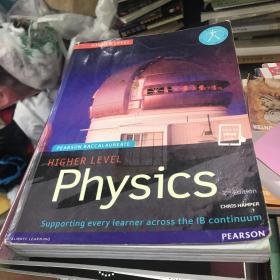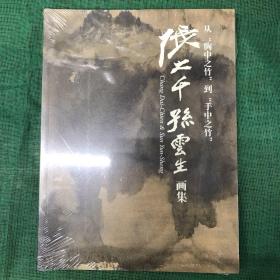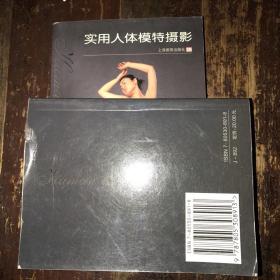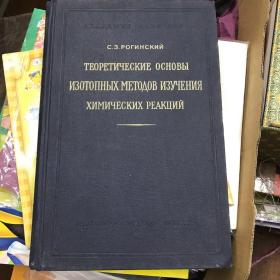
HIGHER LEVEL Physics
¥ 138 八五品
仅1件
上海黄浦
认证卖家担保交易快速发货售后保障
作者Mehmet Onur Fen 著;Marat Akhmet
出版社高等教育出版社
出版时间2015-10
版次1
装帧精装
上书时间2023-08-07
- 在售商品 暂无
- 平均发货时间 14小时
- 好评率 暂无
- 店主推荐
- 最新上架
商品详情
- 品相描述:八五品
图书标准信息
- 作者 Mehmet Onur Fen 著;Marat Akhmet
- 出版社 高等教育出版社
- 出版时间 2015-10
- 版次 1
- ISBN 9787040431025
- 定价 98.00元
- 装帧 精装
- 开本 16开
- 纸张 胶版纸
- 页数 457页
- 【内容简介】
- 本书是讲述诸如:电缆、柱体、棒条体、板材等薄的变形体的数学近似理论。由于非线性变形体动力学有着广泛的应用,比如soft webs 及 rod-reinforced soft structures理论可用于DNA及活组织的生物动力学,且尚有一些解决的理论难题,本书的主要目的激发在该领域的更多的研究。本书可用于物理学、应用数学和生物物理学等专业研究生教材或相关研究人员的参考书。 Nonlinear Deformable-body Dynamics mainly consists in a mathematical treatise of approximate theories for thin deformable bodies,including cables, beams, rods, webs, membranes, plates, and shells. The intent of the bookis to stimulate more research in the area of nonlinear deformable-body dynamics not only because of the unsolved theoretical puzzles it presents but also because of its wide spectrum of applications. For instance, the theories for soft webs and rod-reinforced soft structurescan be applied to biomechanics for DNA and living tissues, and the nonlinear theory of deformable bodies, based on the Kirchhoff assumptions, is a special case discussed. This book can serve as a reference work for researchers and a textbook for senior and postgraduate students in physics, mathematics, engineering and biophysics.
- 【目录】
-
1 Introduction
1.1 Synchronization of Chaotic Systems
1.2 Control of Chaos
1.3 Neural Networks and Chaos
1.4 Extension of Chaos
1.5 Ordering Chaos
1.6 Self-organization of Chaos
1.7 Morphogenesis of Chaos
1.8 Chaos and Cellular Automata
1.9 Synergetics and Chaos
1.10 Mathematics in Chaos Theory
1.11 Chaos Theory and Real World
1.12 Organization of the Book
References
2 Repfication of Continuous Chaos About Equilibria
2.1 Introduction
2.2 Preliminaries
2.3 Chaotic Sets of Functions
2.3.1 Devaney Set of Functions
2.3.2 Li-Yorke Set of Functions
2.4 Hyperbolic Set of Functions
2.5 Replication of Devaney's Chaos
2.6 Extension of Li-Yorke Chaos
2.7 Morphogenesis of Chaos
2.8 Period-Doubling Cascade
2.9 Control by Replication
2.10 Miscellany
2.10.1 Intermittency
2.10.2 Shilnikov Orbits
2.10.3 Morphogenesis of the Double-Scroll Chua's Attractor
2.10.4 Quasiperiodicity in Chaos
2.10.5 Replicators with Nonnegative Eigenvalues
2.11 Notes
References
3 Chaos Extension in Hyperbolic Systems
3.1 Introduction
3.2 Preliminaries
3.3 Extension of Chaos
3.4 Simulations
3.5 Notes
References
4 Entrainment by Chaos
4.1 Introduction
4.2 Preliminaries
4.3 Sensitivity
4.4 Unstable Periodic Solutions
4.5 Main Result
4.6 Examples
4.7 Miscellany
4.7.1 Chaotic Tori
4.7.2 Entrainment in Chua's Oscillators
4.7.3 Controlling Chaos
4.7.4 Entrainment and Synchronization
4.8 The Regular Motion Near the Limit Cycle
4.9 Notes
References
5 Chaotifieation of Impulsive Systems
5.1 Introduction
5.2 Preliminaries
5.3 Chaotic Dynamics
5.4 An Example
5.5 Notes
References
6 Chaos Generation in Continuous/Discrete-Time Models
6.1 Devaney's Chaos of a Relay System
6.1.1 Introduction and Preliminaries
6.1.2 The Chaos
6.1.3 The Chaos on the Attractor
6.1.4 The Period-Doubling Cascade and Intermittency: An Example
6.2 Li-Yorke Chaos in Systems with Impacts
6.2.1 Introduction and Preliminaries
6.2.2 Main Results
6.3 Li-Yorke Chaos in the System with Relay
6.3.1 Introduction and Preliminaries
6.3.2 The Li-Yorke Chaos
6.4 Dynamical Synthesis of Quasi-Minimal Sets
6.4.1 Introduction
6.4.2 Main Result
6.4.3 A Simulation Result
6.4.4 Appendix
6.5 Hyperbolic Sets of Impact Systems
6.6 Chaos and Shadowing
6.6.1 Introduction and Preliminaries
6.6.2 The Devaney's Chaos
6.6.3 Shadowing Property
6.6.4 Simulations
6.7 Chaos in the Forced Duffing Equation
6.7.1 Introduction and Preliminaries
6.7.2 The Chaos Emergence
6.7.3 Controlling Results
6.7.4 Morphogenesis and the Logistic Map
6.7.5 Miscellany
6.8 Notes
References
7 Economic Models with Exogenous Continuous/Discrete Shocks
7.1 Chaos in Economic Models with Equilibria
7.1.1 Introduction
7.1.2 Modeling the Exogenous Shock
7.1.3 Mathematical Investigation of System (7.1.5)
7.1.4 Chaos in a Kaldor-Kalecki Model
7.2 Chaotic Business Cycles
7.2.1 Introduction
7.2.2 The Input-Output Mechanism and Applications
7.2.3 Economic Models: The Base Systems
7.2.4 Chaos in a Stellar of Economical Models
7.2.5 Kaldor-Kalecki Model with Time Delay
7.2.6 Chaos Extension Versus Synchronization
7.3 The Global Unpredictability, Self-organization and Synergetics
7.4 Notes
References
8 Chaos by Neural Networks
8.1 SICNNs with Chaotic External Inputs
8.1.1 Introduction
8.1.2 Preliminaries
8.1.3 Chaotic Dynamics
8.1.4 Examples
8.2 Attraction of Chaos by Retarded SICNNs
8.2.1 Introduction
8.2.2 Preliminaries
8.2.3 Li-Yorke Chaos
8.2.4 An Example
8.2.5 Synchronization of Chaos
8.3 Impulsive SICNNs with Chaotic Postsynaptic Currents
8.3.1 Introduction
8.3.2 Preliminaries
8.3.3 The Existence of Chaos
8.3.4 Examples
8.4 Cyclic/Toroidal Chaos in Hopfield Neural Networks
8.4.1 Introduction
8.4.2 Entrainment by Chaos in HNNs
8.4.3 Control of Cyclic/Toroidal Chaos in Neural Networks
8.5 Notes
References
9 The Prevalence of Weather Unpredictability
9.1 Introduction
9.2 Coupling Mechanism for Unpredictability
9.3 Extension of Lorenz Unpredictability
9.4 Period-Doubling Cascade
9.5 Cyclic Chaos in Lorenz Systems
9.6 Intermittency in the Weather Dynamics
9.7 Self-Organization and Synergetics
9.8 The Mathematical Background
9.8.1 Bounded Positively Invariant RegiOn
9.8.2 Unpredictability Analysis
9.8.3 Unstable Cycles and Unpredictability
9.9 Notes
References
10 Spatiotemporal Chaos in Glow Discharge-Semiconductor Systems
10.1 Introduction
10.2 Preliminaries
10.2.1 Description of the GDS Model
10.2.2 The Model in Dimensionless Form
10.3 Chaotically Coupled GDS Systems
10.4 The Chaos in the Drive GDS System
10.5 Notes
References
点击展开
点击收起
— 没有更多了 —








![世纪丹青.三:中国书画名家纪念馆联会十周年特集:[中英文本]](https://www0.kfzimg.com/sw/kfzimg/3676/032ed9911a4e5cae79_s.jpg)













以下为对购买帮助不大的评价